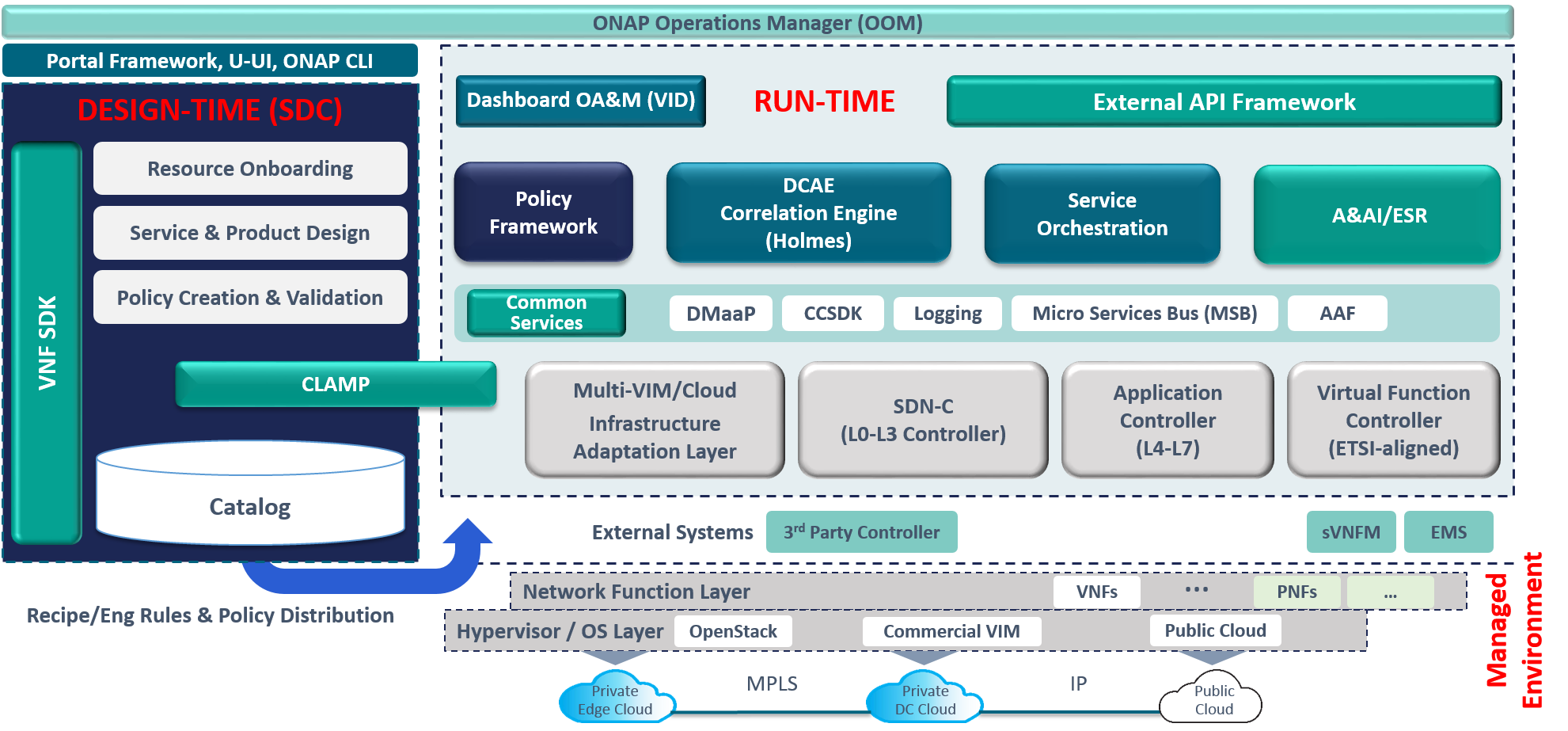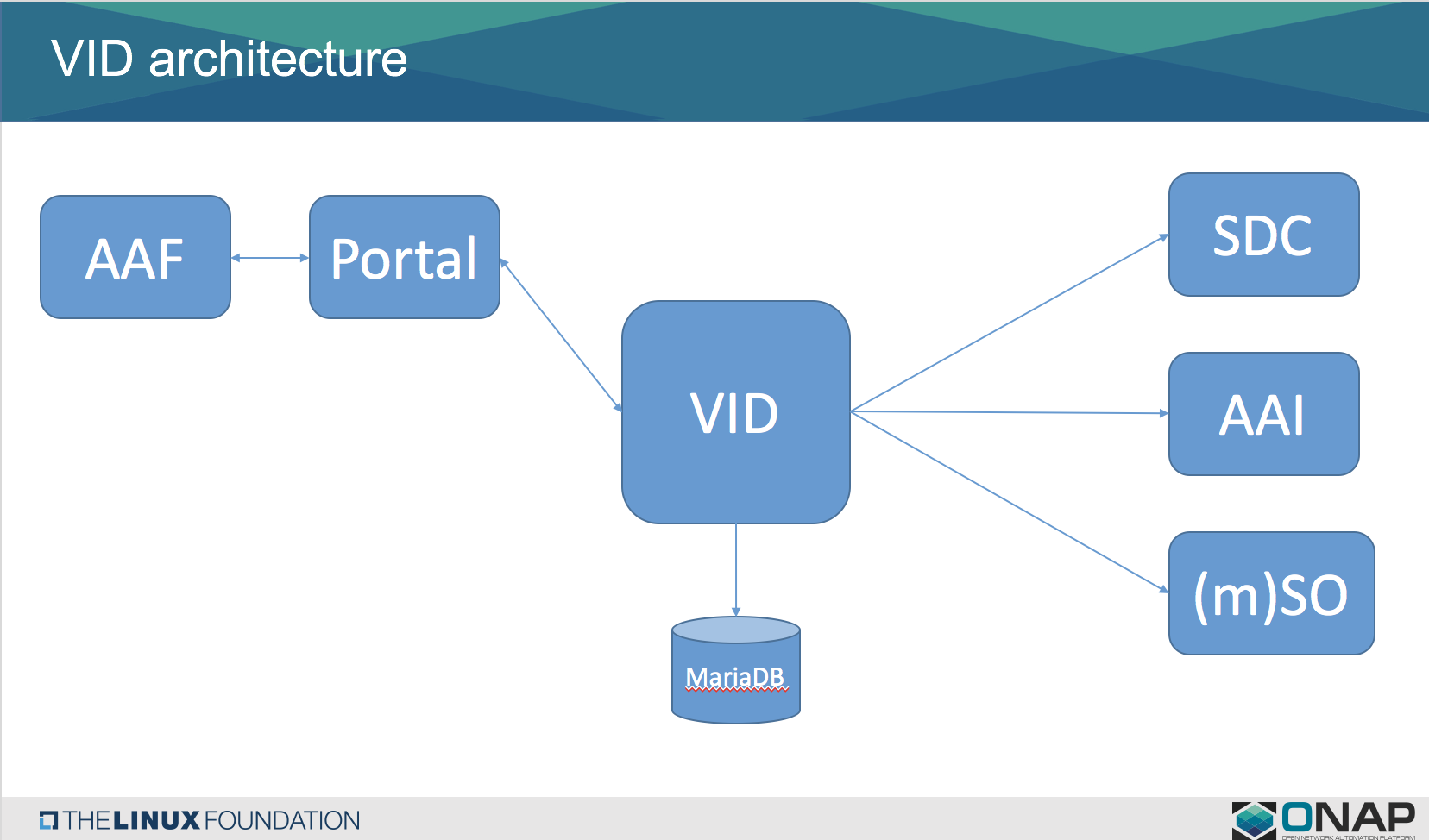The content of this template is expected to be fill out for M1 Release Planning Milestone.
Overview
| Project Name | Enter the name of the project |
|---|---|
| Target Release Name | Beijing Release |
| Project Lifecycle State | Mature (Refer to ONAP Charter, section 3.3 Project Lifecycle for further information) |
| Participating Company | AT&T, Amdocs |
Scope
What is this release trying to address?
1. Platform maturity - enhance stability, performance, security etc. to strive for carrier-grade maturity.
2. New requirements:
a. Change management - support working without a scheduler component.
b. **TBD**
Use Cases
VID will contribute to the following use cases:
VID will continue to support to the following use case:
Use Case: Residential Broadband vCPE (Approved)
Minimum Viable Product
***OFIR
- Read only "ONAP global role" permission for VID users
- Specific role assignment for components instantiations
- Change management for selected work flows (Upgrade and Configuration)
- PNF support
Functionalities
List the functionalities that this release is committing to deliver by providing a link to JIRA Epics and Stories. In the JIRA Priority field, specify the priority (either High, Medium, Low). The priority will be used in case de-scoping is required. Don't assign High priority to all functionalities.
Epics
Stories
Longer term roadmap
- Fully automated deployment of new VNFs without the need of manual intervention or configuration.
- Support workflows for change management by using the SDC as a provider of workflows capabilities
- Dashboarding scheduled and ongoing change management
Release Deliverables
Indicate the outcome (Executable, Source Code, Library, API description, Tool, Documentation, Release Note...) of this release.
| Deliverable Name | Deliverable Description |
|---|---|
| VID application | Executable, Docker |
| MariaDB | SQL database scheme |
| Release documentation | ReadTheDocs, ONAP WIKI pages |
Sub-Components
List all sub-components part of this release.
Activities related to sub-components must be in sync with the overall release.
Sub-components are repositories and are consolidated in a single centralized place. Edit the Release Components name for your project in the centralized page.
Architecture
High level architecture diagram
VID (Dashboard OA&M) is a run-time component as appear in the diagram:
VID dependencies diagram:
Platform Maturity
Refering to CII Badging Security Program and Platform Maturity Requirements, fill out the table below by indicating the actual level , the targeted level for the current release and the evidences on how you plan to achieve the targeted level.
| Area | Actual Level | Targeted Level for current Release | How, Evidences | Comments |
|---|---|---|---|---|
| Performance |
| |||
| Stability |
| |||
| Resiliency |
| |||
| Security |
| |||
| Scalability |
| |||
| Manageability |
| |||
| Usability |
|
API Incoming Dependencies
List the API this project is expecting from other projects.
Prior to Release Planning review, Team Leads must agree on the date by which the API will be fully defined. The API Delivery date must not be later than the release API Freeze date.
Prior to the delivery date, it is a good practice to organize an API review with the API consumers.
| API Name | API Description | API Definition Date | API Delivery date | API Definition link (i.e.swagger) |
|---|---|---|---|---|
| To fill out | High level description of the API | Date for which the API is reviewed and agreed | To fill out | Link toward the detailed API description |
API Outgoing Dependencies
API this project is delivering to other projects.
| API Name | API Description | API Definition Date | API Delivery date | API Definition link (i.e.swagger) |
|---|---|---|---|---|
| To fill out | High level description of the API | Date for which the API is reviewed and agreed | To fill out | Link toward the detailed API description |
Third Party Products Dependencies
Third Party Products mean products that are mandatory to provide services for your components. Development of new functionality in third party product may or not be expected.
List the Third Party Products (OpenStack, ODL, RabbitMQ, ElasticSearch,Crystal Reports, ...).
| Name | Description | Version |
|---|---|---|
| Docker | Docker container host | Latest one |
| MariaDB | SQL DB | 10.1.11 |
Testing and Integration Plans
Provide a description of the testing activities (unit test, functional test, automation,...) that will be performed by the team within the scope of this release.
Describe the plan to integrate and test the release deliverables within the overall ONAP system.
Confirm that resources have been allocated to perform such activities.
- Unit tests are run automatically as part of every code merge.
- Once the final Docker image is compiled, it will be installed onto a Docker host and will be checked to ensure no errors occur during start-up.
- Functional testing will occur to ensure that the use cases are functioning correctly.
Gaps
This section is used to document a limitation on a functionality or platform support. We are currently aware of this limitation and it will be delivered in a future release.
List identified release gaps (if any), and their impact.
| Gaps identified | Impact |
|---|---|
| To fill out | To fill out |
Known Defects and Issues
Provide a link toward the list of all known project bugs.
Risks
List the risks identified for this release along with the plan to prevent the risk to occur (mitigation) and the plan of action in the case the risk would materialized (contingency).
| Risk identified | Mitigation Plan | Contingency Plan |
|---|---|---|
| To fill out | To fill out | To fill out |
Resources
Fill out the Resources Committed to the Release centralized page.
Release Milestone
The milestones are defined at the Release Level and all the supporting project agreed to comply with these dates.
Team Internal Milestone
This section is optional and may be used to document internal milestones within a project team or multiple project teams. For instance, in the case the team has made agreement with other team to deliver some artifacts on a certain date that are not in the release milestone, it is erecommended to provide these agreements and dates in this section.
It is not expected to have a detailed project plan.
| Date | Project | Deliverable |
|---|---|---|
| To fill out | To fill out | To fill out |
Documentation, Training
- Highlight the team contributions to the specific document related to he project (Config guide, installation guide...).
- Highlight the team contributions to the overall Release Documentation and training asset
- High level list of documentation, training and tutorials necessary to understand the release capabilities, configuration and operation.
- Documentation includes items such as:
- Installation instructions
- Configuration instructions
- Developer guide
- End User guide
- Admin guide
- ...
Note
The Documentation project will provide the Documentation Tool Chain to edit, configure, store and publish all Documentation asset.
Other Information
Vendor Neutral
If this project is coming from an existing proprietary codebase, ensure that all proprietary trademarks, logos, product names, etc. have been removed. All ONAP deliverables must comply with this rule and be agnostic of any proprietary symbols.
Free and Open Source Software
FOSS activities are critical to the delivery of the whole ONAP initiative. The information may not be fully available at Release Planning, however to avoid late refactoring, it is critical to accomplish this task as early as possible.
List all third party Free and Open Source Software used within the release and provide License type (BSD, MIT, Apache, GNU GPL,... ).
In the case non Apache License are found inform immediately the TSC and the Release Manager and document your reasoning on why you believe we can use a non Apache version 2 license.
Each project must edit its project table available at Project FOSS.
Charter Compliance
The project team comply with the ONAP Charter.

